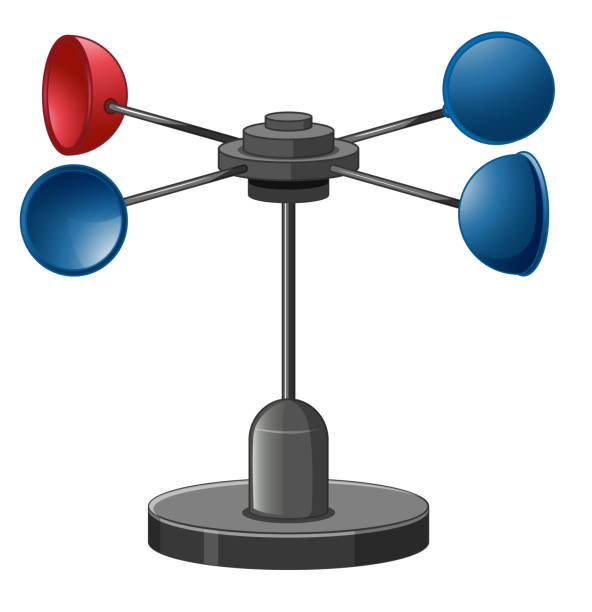How an Anemometer Can Enhance Your Weather Monitoring System
How an Anemometer Can Enhance Your Weather Monitoring System
Blog Article
Discovering the Features and Advantages of Anemometers for Climate Fanatics and Professionals
From mug anemometers to sonic anemometers, each kind brings its distinct set of applications and advantages, shedding light on various facets of atmospheric problems. As we dig into the features and advantages of anemometers, a much deeper understanding emerges not just of prevailing weather sensations but also of the more comprehensive ramifications for sectors like wind power production and ecological research.
Importance of Anemometers in Climate Monitoring
Anemometers play a vital duty in weather condition surveillance by providing accurate dimensions of wind rate, assisting in forecasting and understanding weather condition patterns. These tools, varying from traditional cup anemometers to modern ultrasonic anemometers, are vital for meteorologists, researchers, and weather lovers alike.

Kinds Of Anemometers and Their Applications
The most typical types of anemometers consist of cup anemometers, vane anemometers, hot-wire anemometers, and ultrasonic anemometers. Mug anemometers consist of three or 4 mugs mounted on straight arms that rotate with the wind, gauging its speed. Vane anemometers, on the various other hand, use an openly turning vane to straighten with the wind direction, giving both wind speed and instructions measurements.
Cup anemometers are ideal and robust for general weather tracking, while vane anemometers are preferred for directional dimensions. Ultrasonic anemometers are non-intrusive and offer high precision, typically made use of in study and specialized climate surveillance applications.
Advantages of Using Anemometers in Forecasting
In meteorology, the usage of anemometers provides very useful benefits for boosting the precision of weather condition forecasting. Anemometers measure wind rate and instructions, giving crucial information for forecasting weather condition patterns. By integrating wind data into forecasting designs, meteorologists can better recognize the activity of weather condition systems, anticipate changes in weather, and problem much more accurate projections.
Moreover, anemometers play an important function in analyzing potential climate dangers. Keeping track of wind speeds helps forecasters forecast severe climate events such as hurricanes, hurricanes, and wintertime storms with higher accuracy. This very early warning system makes it possible for authorities to provide prompt notifies and implement essential safety Website and security steps, lowering the dangers to life and home.
Additionally, anemometers help in optimizing renewable resource manufacturing. By analyzing wind patterns, meteorologists can determine ideal places for wind ranches and predict energy result, contributing to the reliable generation of wind power.

Anemometers in Wind Power Manufacturing
Offered the crucial function anemometers play in supplying exact wind data for weather condition forecasting and danger evaluation, their relevance includes the world of wind power manufacturing. Anemometers are important instruments in the field of wind energy, where the measurement of wind speed and instructions is crucial for identifying the expediency and effectiveness of wind generator installments. By properly gauging wind rates at differing elevations, anemometers aid maximize the positioning and layout of wind generators to take full advantage of energy outcome.
In wind ranches, anemometers are tactically put to gather real-time wind data that is used to evaluate the potential energy production of a website. This information is crucial in establishing the financial feasibility of wind power jobs and in forecasting energy generation to guarantee grid stability. In addition, anemometers help in keeping an eye on wind conditions to optimize turbine efficiency, stop damage from high winds, and guarantee the security of personnel operating in the vicinity of wind turbines.
Enhancing Climate Comprehending With Anemometers

Anemometers play a key role in boosting our understanding of microclimates. These local climate condition can differ dramatically from more comprehensive local projections, making it necessary to have precise data for certain areas. anemometer. By strategically placing anemometers in numerous areas, researchers can gather detailed details on just how wind acts in different terrains, city settings, or bodies this of water
Additionally, anemometers add to improving climate projecting models by offering real-time data on wind behavior. This details is especially valuable for predicting severe climate events, optimizing agricultural practices, and sustaining industries like aeronautics and maritime navigating. In general, anemometers are important tools that enable us to delve much deeper into the intricacies of weather read more condition systems, eventually leading to even more better-informed choices and accurate forecasts.
Conclusion
In conclusion, anemometers play a vital duty in weather tracking and forecasting by gauging wind rate and direction. Anemometers additionally have applications in wind energy manufacturing, more highlighting their importance in both weather forecasting and eco-friendly energy sectors.
From cup anemometers to sonic anemometers, each type brings its unique collection of applications and advantages, dropping light on different facets of climatic problems. These tools, ranging from standard mug anemometers to modern-day ultrasonic anemometers, are important for meteorologists, researchers, and weather condition lovers alike. The most common types of anemometers include mug anemometers, vane anemometers, hot-wire anemometers, and ultrasonic anemometers. Mug anemometers are durable and ideal for basic climate surveillance, while vane anemometers are preferred for directional dimensions. Anemometers are vital tools in the field of wind energy, where the measurement of wind speed and instructions is crucial for identifying the expediency and effectiveness of wind turbine installations.
Report this page